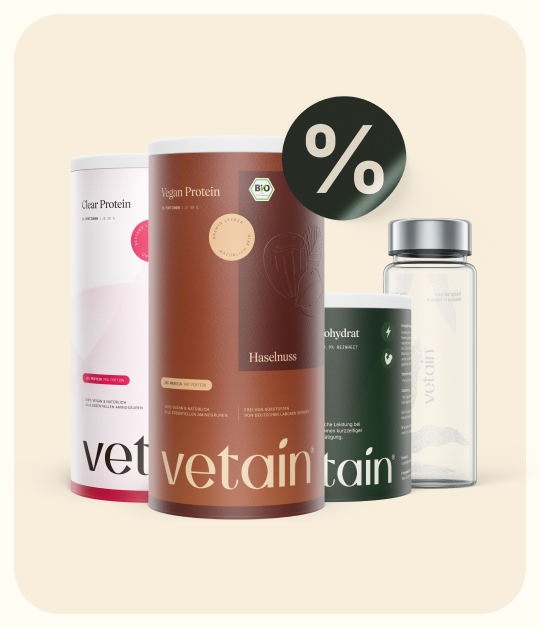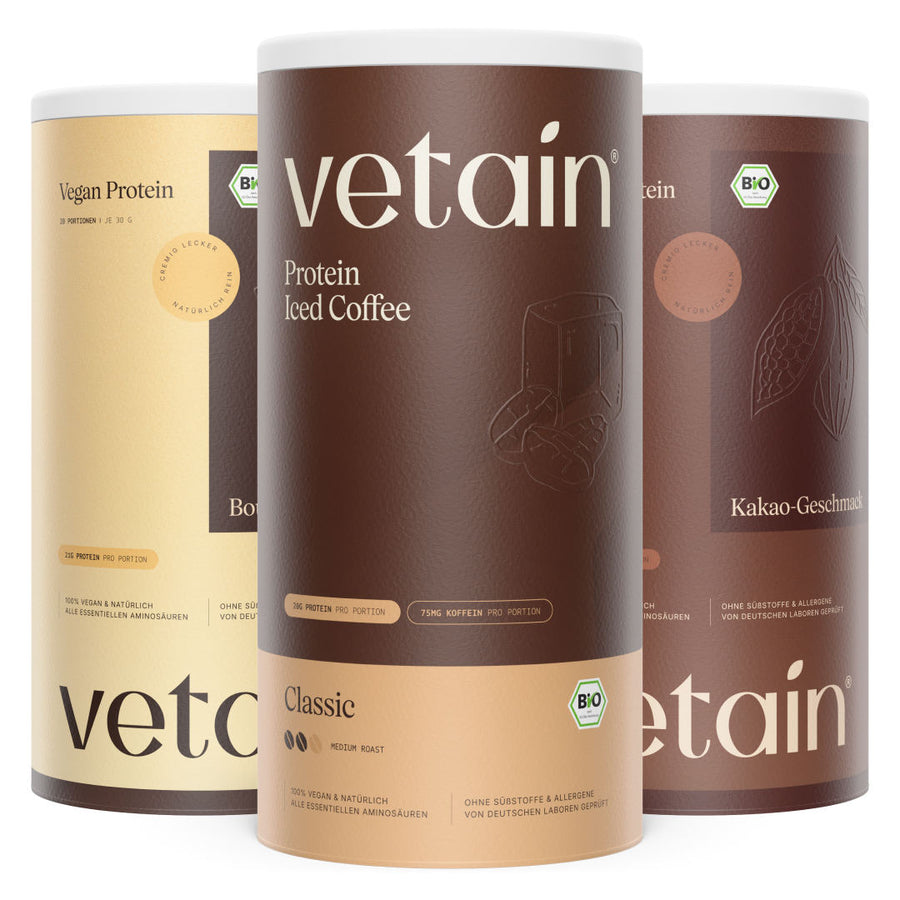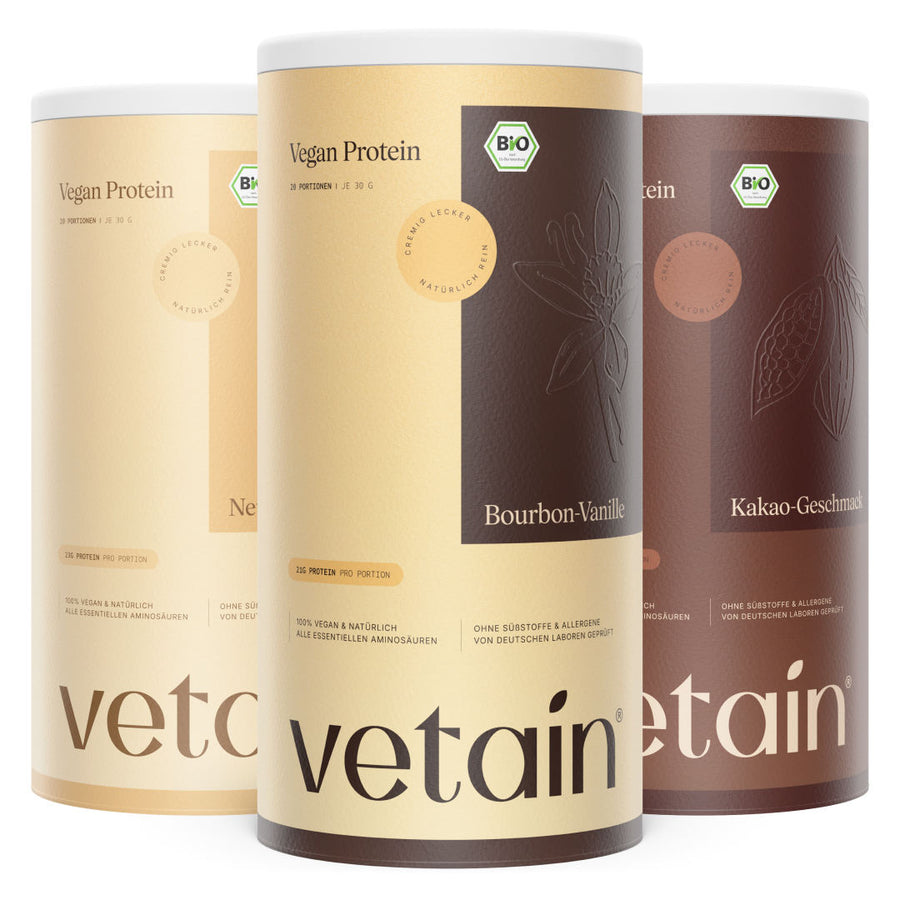Yesterday was leg day. Today you can barely walk. And you already know: this level of soreness won't magically disappear by tomorrow. The problem? Tomorrow is leg day again...
The big question: Is it actually smart to train when your muscles are sore? Could that slow down your progress or even reverse it? What’s truly best for muscle growth? And — is there any chance to get rid of the soreness by tomorrow?
Okay, that was more than one question. But here’s one clear answer: Vetain.
We’ve gathered everything you need to know—and now you’ll find it all right here. So if you’ve always wanted to know whether it’s okay to train with muscle soreness, here’s where you’ll finally get the answers. Because let’s be honest: every informed decision starts with knowing exactly what’s going on.
Is it okay to train with sore muscles? What is happening in your body?
Muscle soreness—almost everyone who's active knows that annoying feeling after a tough workout. For some, it's not even unpleasant. It’s a badge of honor that shows: I did something. But what’s actually happening in your body?
Soreness typically shows up after unusual or particularly intense training and feels like pain in your muscles. It’s caused by microscopic tears in your muscle fibers that occur during exercise.
Let’s zoom in: When you try new exercises or movements your body isn’t used to, your muscles might not evenly distribute the load. Some fibers take on more strain than they can handle—and bam, you’re sore. That’s also why you stop getting sore from the same workout after a while: your muscles adapt and get stronger. So technically, those tiny tears are a signal that your muscles are getting stronger. Your body sees the damage and says: next time, we better be ready. It’s a survival mechanism that — evolutionarily speaking — was designed to help you run faster or climb a tree if a tiger was chasing you.
Nowadays, tigers are rare. But the question remains: Train or rest when you're sore?
Let’s dive into the science behind muscle growth and recovery before deciding.
Why does soreness often hit the next day?
The pain you feel doesn’t show up instantly. It usually kicks in 24 to 48 hours after training and can range from a mild ache to serious discomfort. That delay comes from the inflammatory process your body initiates to heal—just like with a small cut, it often hurts the most a day or two later. This pain shows your body is already working on repairing those micro-tears and building new muscle fibers. That’s why soreness is often seen as a sign of muscle growth: your muscles rebuild stronger during recovery.
So, is soreness a good thing? Not really. It just shows your body is reacting and adapting. But it shouldn't be used as a benchmark for effective training. Too much soreness can actually be a red flag for overtraining.
Also: No soreness doesn’t mean no gains. If you’re consistently training hard and not getting sore, it might just mean you’re doing everything right—eating well, recovering properly, and your body’s functioning at a high level. And yes, you can still build muscle!
What can you do about sore muscles?
If you're sore, there are things you can do to ease the discomfort and speed up recovery. Here's a quick guide:
-
Rest: Let your body heal. That’s step one.
-
Light stretching and gentle movement can boost circulation and help relax your muscles—but be cautious not to overdo it.
-
Heat (like warm baths) can relax tight muscles, while cold (like ice packs) helps with inflammation.
-
Prioritize sleep. Most healing happens at night.
-
Review your habits: Constant soreness could point to poor recovery strategies.
Nutrition matters, too. High-protein foods or protein shakes support muscle repair. Creatine can also aid recovery—but only if taken regularly beforehand. And don’t forget water—hydration plays a crucial role.
If the pain doesn't ease or gets worse, your body’s telling you it needs a break. Always listen. No blog, no video, no “expert” can replace your own awareness of how your body feels. Trust that first.
The million-dollar question: Should you train when you're sore?
As always—it depends.
The rule of thumb: Yes, you can train when you’re sore, as long as you listen to your body and adjust accordingly.
Light to moderate activity can actually speed up recovery by increasing blood flow and reducing stiffness. Ever notice soreness feels worse after sitting all day or first thing in the morning? Movement helps.
But what about intense workouts? Do NOT heavily train sore muscles. That can lead to further tears and even injury. Focus instead on recovery or training other muscle groups. For example: sore upper body? Do a leg workout instead.
Pros & cons of training with soreness
Pros:
-
Boosts circulation and speeds up recovery
-
Reduces stiffness and improves nutrient delivery
-
Keeps you moving and feeling mentally on track
Cons:
-
Risk of overtraining if you push too hard
-
Can delay recovery or worsen injuries if you stress the sore muscles
-
Might weaken your joints and posture if done repeatedly
So if you’re feeling sore, keep it light. Go for a swim, hop on a bike, or try yoga or Pilates. But save the HIIT and heavy lifting for later.
Can you still build muscle when you’re sore?
Yes — but only if you’re smart about it.
Don’t work the sore muscles again. Focus on other areas or stick to low-impact activity. Anyway, training the same muscle group two days in a row isn’t ideal, even without soreness.
Always listen to your body. Pain is information—don’t ignore it. If your soreness lasts more than three days, that’s a clear sign to rest. Remember: your muscles support your skeleton and organs. When overtrained, they can’t do that properly, leading to injuries and poor posture.
We’re not talking about a slight ache here—we mean full-blown soreness that takes days to heal. Still want to train after three days of pain? Not a great idea.
What types of exercise are okay with soreness?
Choose activities that help your body, not hurt it.
-
Swimming is great: low impact, full body, joint-friendly.
-
Yoga and Pilates: gentle stretching, improved blood flow, no strain.
-
Cycling at a moderate pace: keeps muscles loose and encourages recovery.
Avoid: heavy weightlifting or intense HIIT while sore. Instead, adapt your training and let your body heal.
How long does muscle soreness last?
It depends. Most soreness fades within 24–72 hours. The first 24 hours tend to be the most painful, when the inflammation peaks.
Recovery length varies based on:
-
Training intensity
-
How used your body is to the exercise
-
Your diet and overall recovery routine
If you’re still sore after 3 days, that’s your cue to rest and prioritize recovery strategies: stretching, light movement, quality sleep.
Still hurting after that? It might be an injury. Get it checked. Don’t push through the pain just to stick to a schedule.
Training with sore muscles: What you need to know
Let's wrap it up. Screenshot this if you want a quick reference:
1. Assess the soreness: mild, moderate, oder severe?
2. Support the recovery: eat protein, use heat or cold and rest.
Mild soreness: light activity is okay–don't overdo it.
Moderate soreness: rest or work other muscle groups.
Severe soreness: full rest for the sore area. Try swimming, biking, yoga. If it doesn't go away, seek medical advice.
Bottom line: a break now is better than being out for six months with an injury.
By the way: high-quality protein is essential for muscle recovery and can help with soreness. Protein = amino acids = the building blocks of your muscles. If you're still looking for clean, vegan protein sources—good news! Vetain’s got you covered with pure protein powders, free of additives and weird stuff. Check them out in our shop.
And when you're fully recovered and ready to crush it again? Take a look at our gym training plans — they might just help you avoid soreness overload next time.















 4 Min
4 Min
 Zuletzt aktualisiert am 10.07.2025
Zuletzt aktualisiert am 10.07.2025




